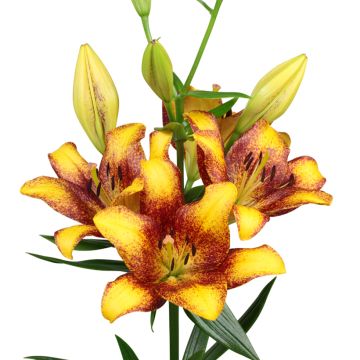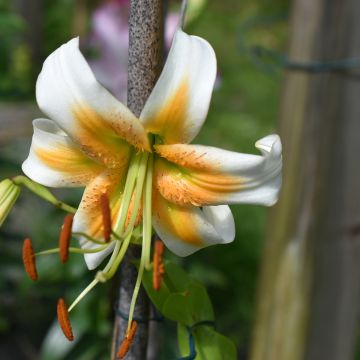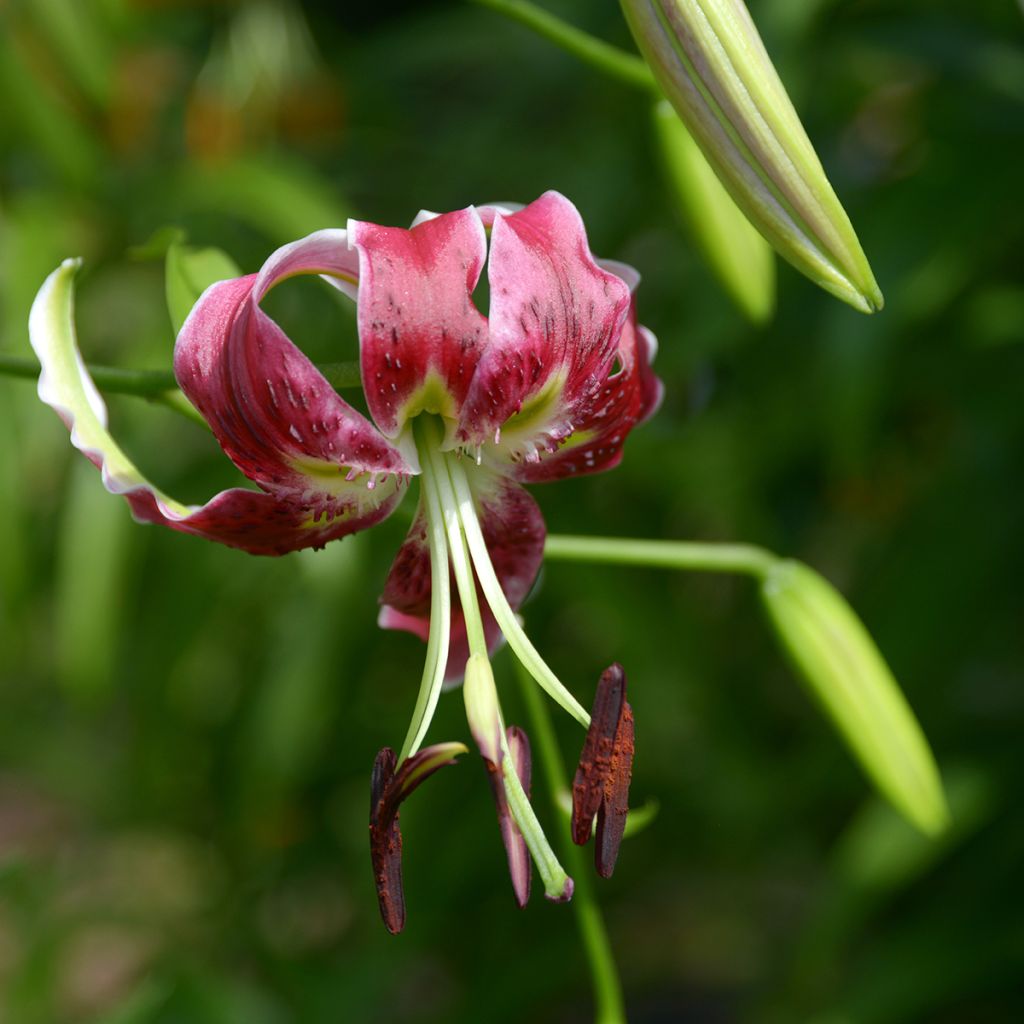

Lis hybride oriental - Lilium x speciosum Black Beauty -
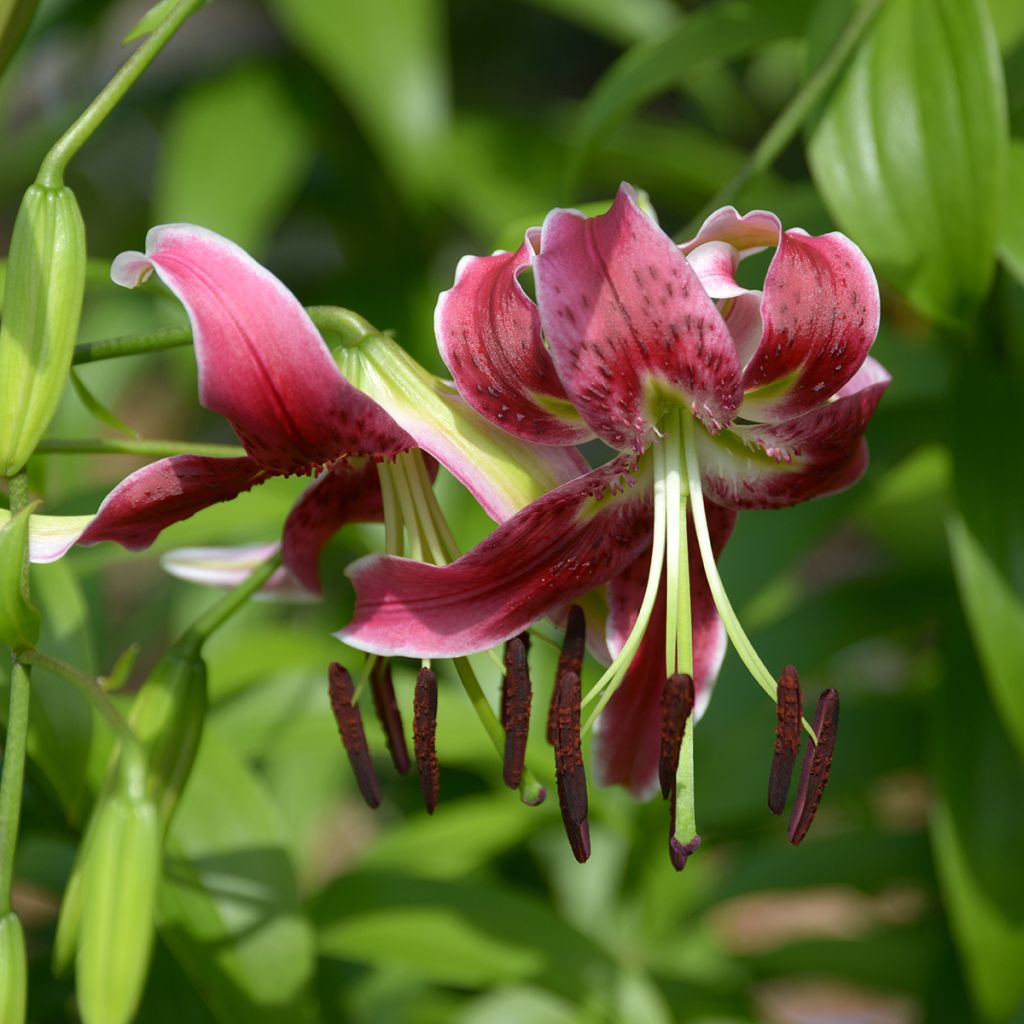

Lis hybride oriental - Lilium x speciosum Black Beauty -
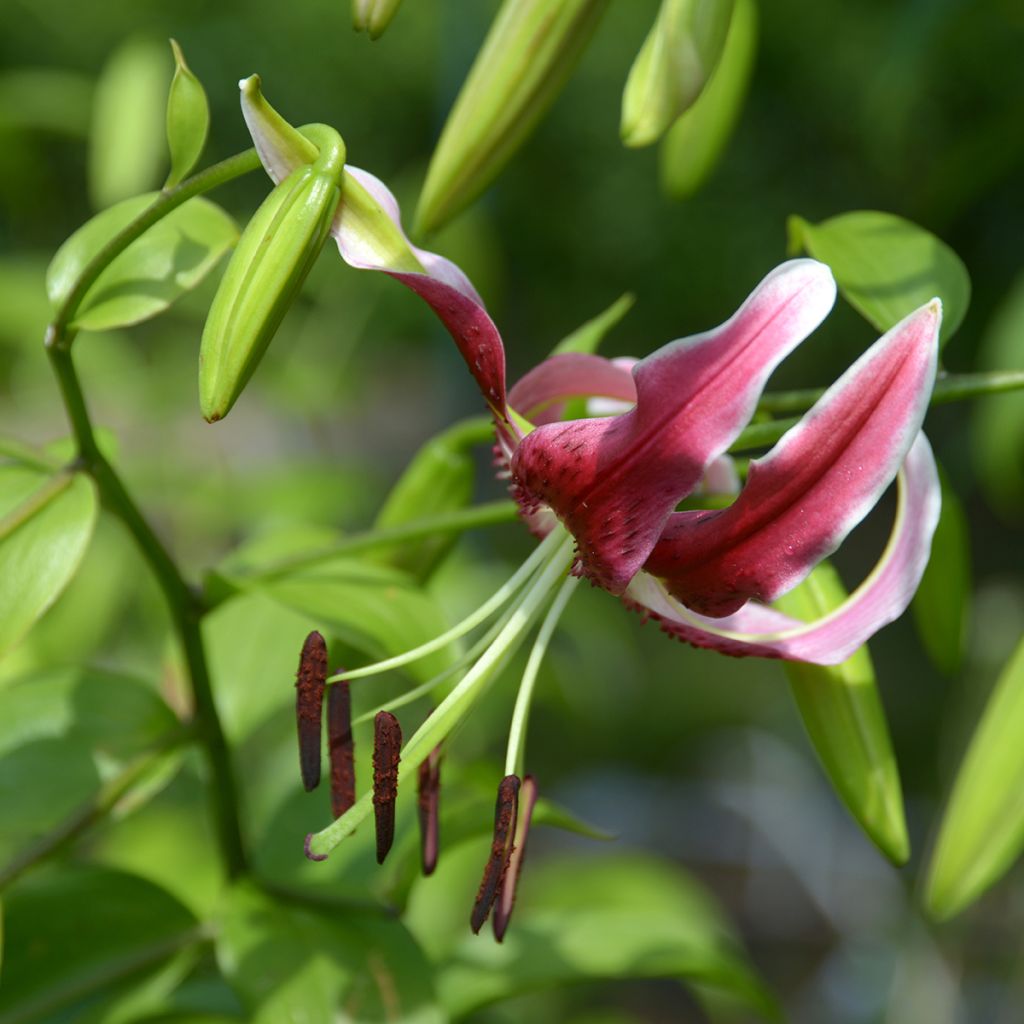

Lis hybride oriental - Lilium x speciosum Black Beauty -
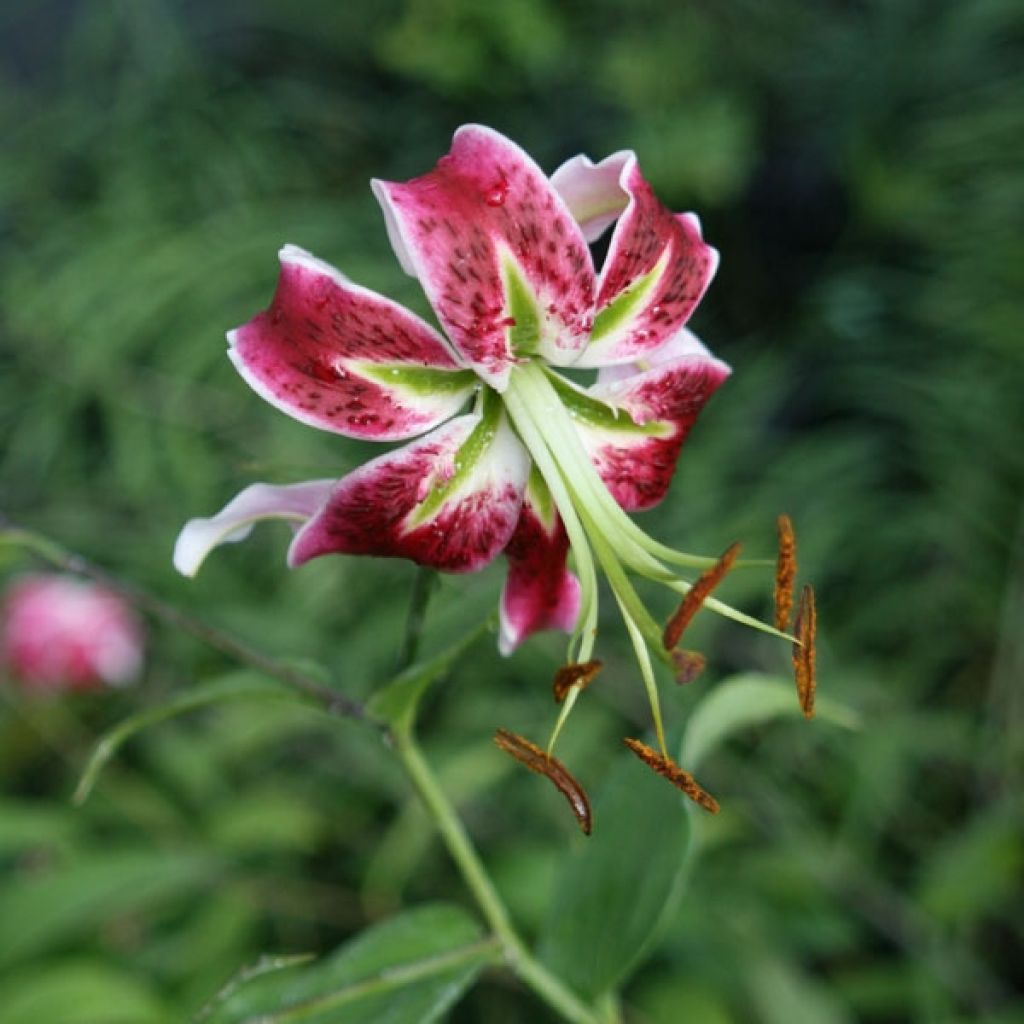

Lis Hybride Black Beauty
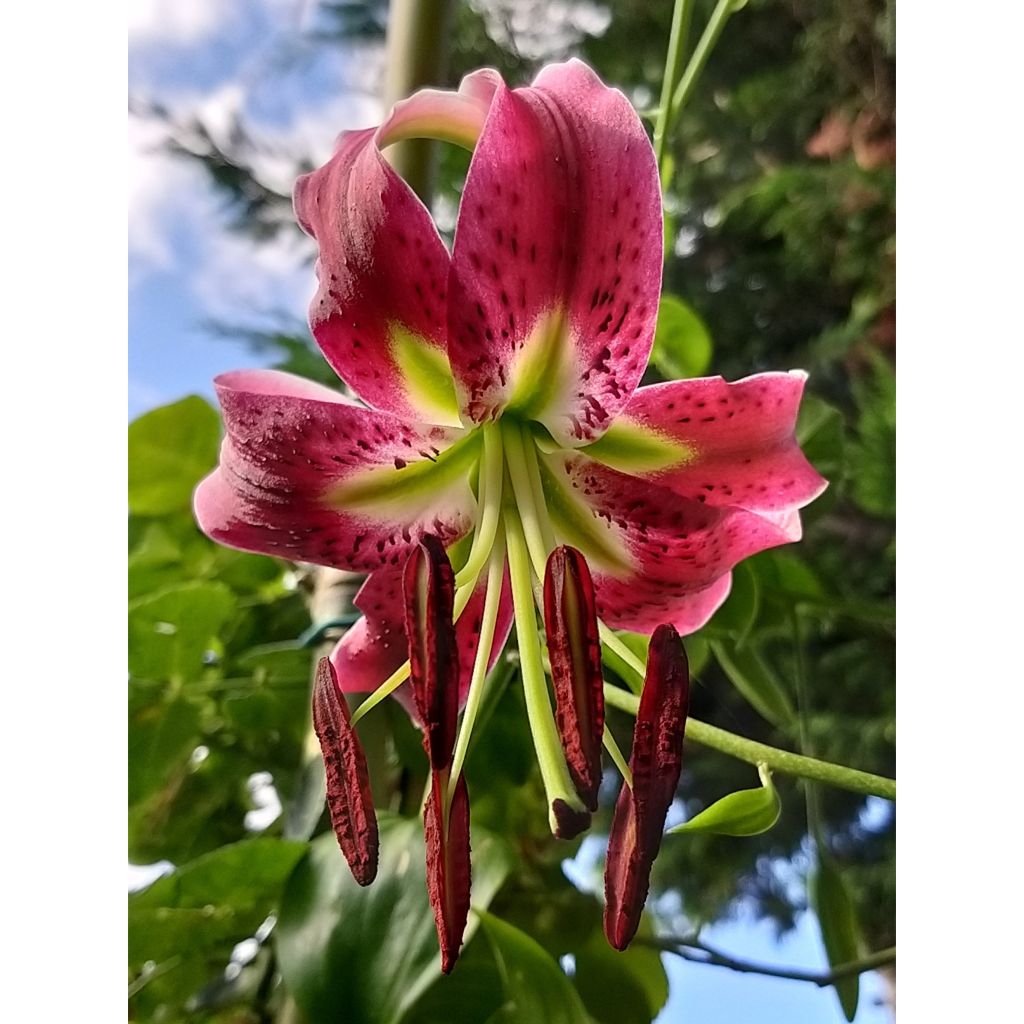

Lilium Black Beauty
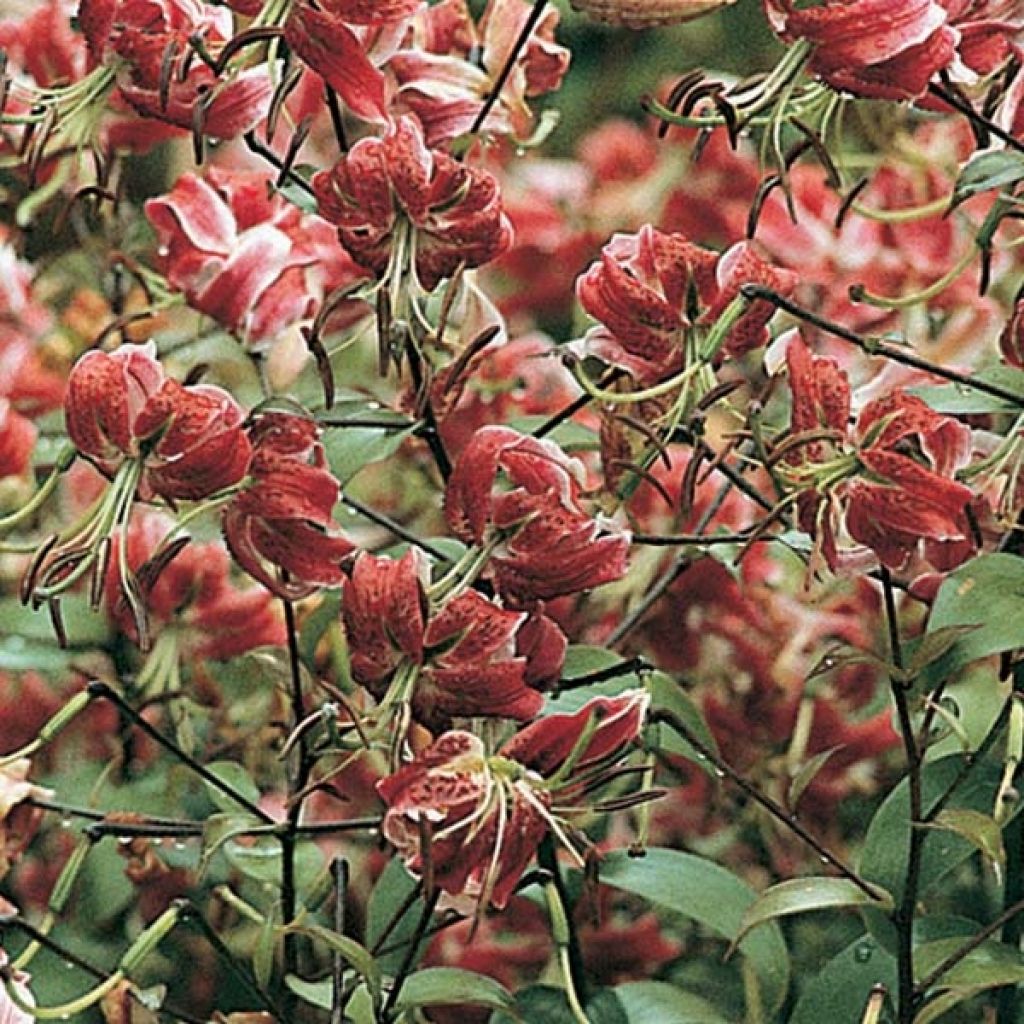

Lilium Black Beauty
Lilium Black Beauty
Lilium Black Beauty
Lily
This item cannot be shipped to the selected country
Delivery charge from €5.90
More information
Schedule delivery date,
and select date in basket
This plant carries a 6 months recovery warranty
More information
We guarantee the quality of our plants for a full growing cycle, and will replace at our expense any plant that fails to recover under normal climatic and planting conditions.
From €5.90 for pickup delivery and €6.90 for home delivery
Express home delivery from €8.90.

Does this plant fit my garden?
Set up your Plantfit profile →
Description
The 'Black Beauty' hybrid lily is a lily that everyone should have in their garden. Its flared, strongly reflexed petals are a deep wine red or dark pink finely edged with white, with a prominent stamen in the centre. It is a superlative, indestructible and flourishing garden plant, succeeding in all climates and always producing more cascades of flowers over the years.
The genus Lilium belongs to the Liliaceae family. 'Black Beauty' is an exceptional hybrid, obtained by cross-breeding L. henryi and L. speciosum. In 50 years of existence, it has become the basis for many other hybrids. It can easily reach 150 cm (59in) high, with a width of 45 cm (18in), when grown under optimal conditions. The vigour of this hybrid is such that it is practically indestructible. It will flower in August, on stems with 30 to 40 buds each on a mature plant. The flowers measure 8 cm (3in) in diameter and are only slightly fragrant in the evening. The stems are thick and sturdy, so will not need staking. This lily quickly produces numerous bulbs.
This lily prefers humus-rich soil and does not like excessively chalky and poorly drained soils. You can grow Lilium 'Black Beauty' with perennial plants as it enjoys having its feet in the shade, and the perennials will help prevent the stems from bending in the wind. Lilies are ideal for borders, large pots, and of course, bouquets.
Report an error about the product description
Lilium Black Beauty in pictures
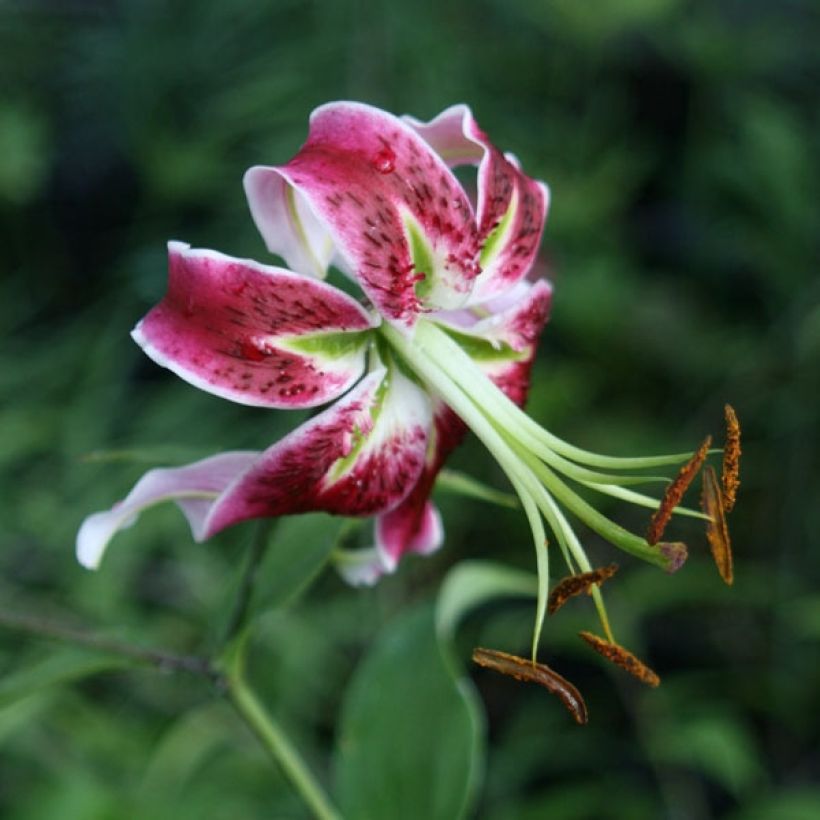

Plant habit
Flowering
Foliage
Botanical data
Lilium
Black Beauty
Liliaceae
Lily
Cultivar or hybrid
Other Hybrid Lilies
Planting and care
Lilium 'Black Beauty' thrives in humus-rich soil and does not like excessively chalky and poorly drained soils. Plant the bulbs in October or in spring, 15 cm (6in) deep in a pocket of soil mixed with leaf compost. If planted in a too shady location, it will tend to elongate considerably. To keep the stems strong, choose an open area with a sunny but not scorching exposure. Surround the bulbs with a layer of sand to prevent rot and slug attacks, while allowing them to grow more easily. Mark the planting location, as the vegetation only starts in March-April. Protect young shoots from frost in severe cold. If red lily beetles appear, treat them immediately as their larvae can devour all the leaves. The most effective method is to catch them manually but be careful as they drop as soon as they are touched. After flowering, it is a good idea to cut the faded flowers halfway to keep the bed beautiful during summer. The bulbs of this lily multiply rapidly and can be divided every 3 or 4 years. If you prefer not to divide the clumps after four years, the dense cluster will produce numerous, shorter stems with fewer flowers per stem, making the plant bushy, which is still attractive. To obtain stems that are 2 metres (7 feet) long with 30 to 40 buds each, you must divide the bulbs.
Planting period
Intended location
Care
-
, onOrder confirmed
Reply from on Promesse de fleurs
Haven't found what you were looking for?
Hardiness is the lowest winter temperature a plant can endure without suffering serious damage or even dying. However, hardiness is affected by location (a sheltered area, such as a patio), protection (winter cover) and soil type (hardiness is improved by well-drained soil).

Photo Sharing Terms & Conditions
In order to encourage gardeners to interact and share their experiences, Promesse de fleurs offers various media enabling content to be uploaded onto its Site - in particular via the ‘Photo sharing’ module.
The User agrees to refrain from:
- Posting any content that is illegal, prejudicial, insulting, racist, inciteful to hatred, revisionist, contrary to public decency, that infringes on privacy or on the privacy rights of third parties, in particular the publicity rights of persons and goods, intellectual property rights, or the right to privacy.
- Submitting content on behalf of a third party;
- Impersonate the identity of a third party and/or publish any personal information about a third party;
In general, the User undertakes to refrain from any unethical behaviour.
All Content (in particular text, comments, files, images, photos, videos, creative works, etc.), which may be subject to property or intellectual property rights, image or other private rights, shall remain the property of the User, subject to the limited rights granted by the terms of the licence granted by Promesse de fleurs as stated below. Users are at liberty to publish or not to publish such Content on the Site, notably via the ‘Photo Sharing’ facility, and accept that this Content shall be made public and freely accessible, notably on the Internet.
Users further acknowledge, undertake to have ,and guarantee that they hold all necessary rights and permissions to publish such material on the Site, in particular with regard to the legislation in force pertaining to any privacy, property, intellectual property, image, or contractual rights, or rights of any other nature. By publishing such Content on the Site, Users acknowledge accepting full liability as publishers of the Content within the meaning of the law, and grant Promesse de fleurs, free of charge, an inclusive, worldwide licence for the said Content for the entire duration of its publication, including all reproduction, representation, up/downloading, displaying, performing, transmission, and storage rights.
Users also grant permission for their name to be linked to the Content and accept that this link may not always be made available.
By engaging in posting material, Users consent to their Content becoming automatically accessible on the Internet, in particular on other sites and/or blogs and/or web pages of the Promesse de fleurs site, including in particular social pages and the Promesse de fleurs catalogue.
Users may secure the removal of entrusted content free of charge by issuing a simple request via our contact form.
The flowering period indicated on our website applies to countries and regions located in USDA zone 8 (France, the United Kingdom, Ireland, the Netherlands, etc.)
It will vary according to where you live:
- In zones 9 to 10 (Italy, Spain, Greece, etc.), flowering will occur about 2 to 4 weeks earlier.
- In zones 6 to 7 (Germany, Poland, Slovenia, and lower mountainous regions), flowering will be delayed by 2 to 3 weeks.
- In zone 5 (Central Europe, Scandinavia), blooming will be delayed by 3 to 5 weeks.
In temperate climates, pruning of spring-flowering shrubs (forsythia, spireas, etc.) should be done just after flowering.
Pruning of summer-flowering shrubs (Indian Lilac, Perovskia, etc.) can be done in winter or spring.
In cold regions as well as with frost-sensitive plants, avoid pruning too early when severe frosts may still occur.
The planting period indicated on our website applies to countries and regions located in USDA zone 8 (France, United Kingdom, Ireland, Netherlands).
It will vary according to where you live:
- In Mediterranean zones (Marseille, Madrid, Milan, etc.), autumn and winter are the best planting periods.
- In continental zones (Strasbourg, Munich, Vienna, etc.), delay planting by 2 to 3 weeks in spring and bring it forward by 2 to 4 weeks in autumn.
- In mountainous regions (the Alps, Pyrenees, Carpathians, etc.), it is best to plant in late spring (May-June) or late summer (August-September).
The harvesting period indicated on our website applies to countries and regions in USDA zone 8 (France, England, Ireland, the Netherlands).
In colder areas (Scandinavia, Poland, Austria...) fruit and vegetable harvests are likely to be delayed by 3-4 weeks.
In warmer areas (Italy, Spain, Greece, etc.), harvesting will probably take place earlier, depending on weather conditions.
The sowing periods indicated on our website apply to countries and regions within USDA Zone 8 (France, UK, Ireland, Netherlands).
In colder areas (Scandinavia, Poland, Austria...), delay any outdoor sowing by 3-4 weeks, or sow under glass.
In warmer climes (Italy, Spain, Greece, etc.), bring outdoor sowing forward by a few weeks.



































